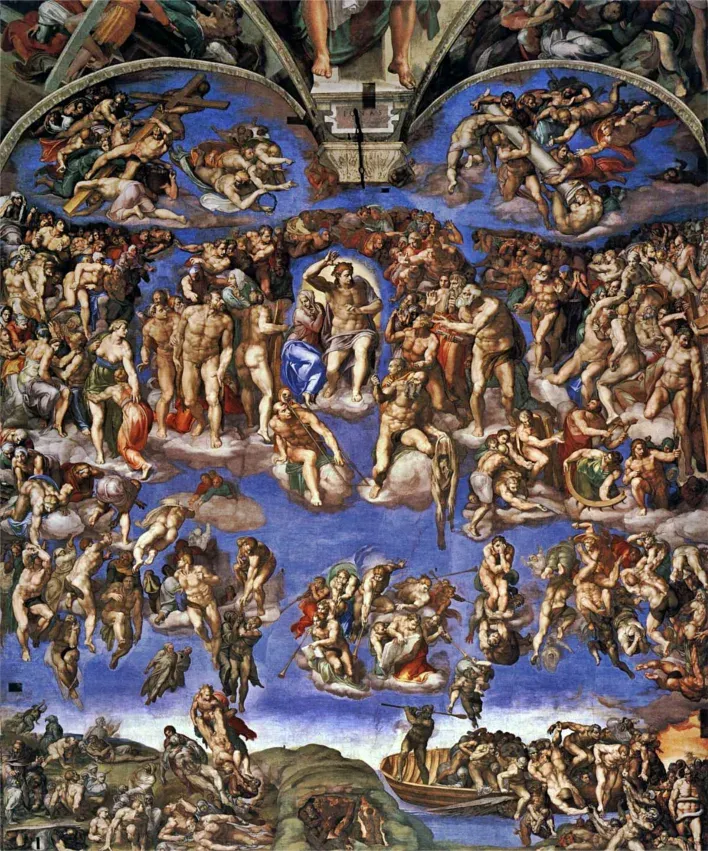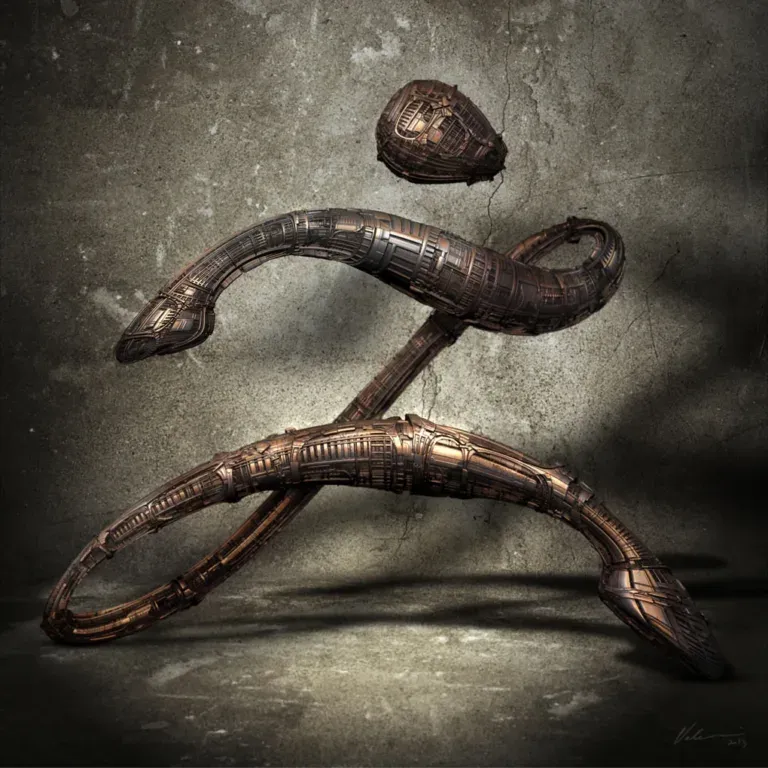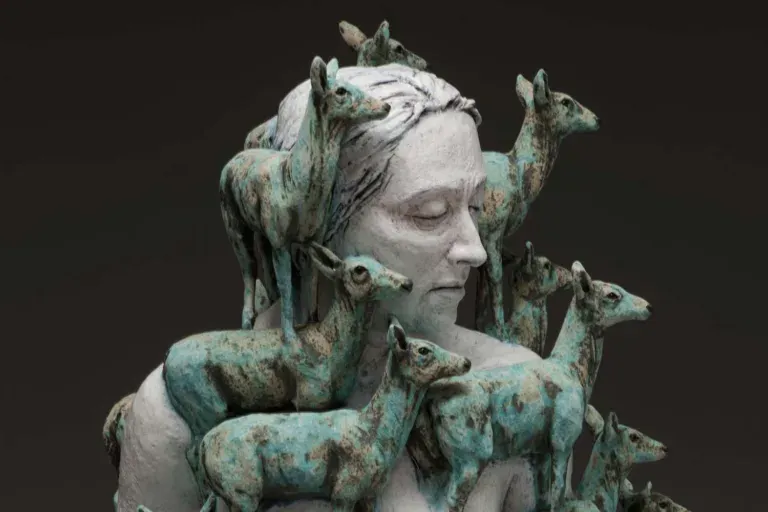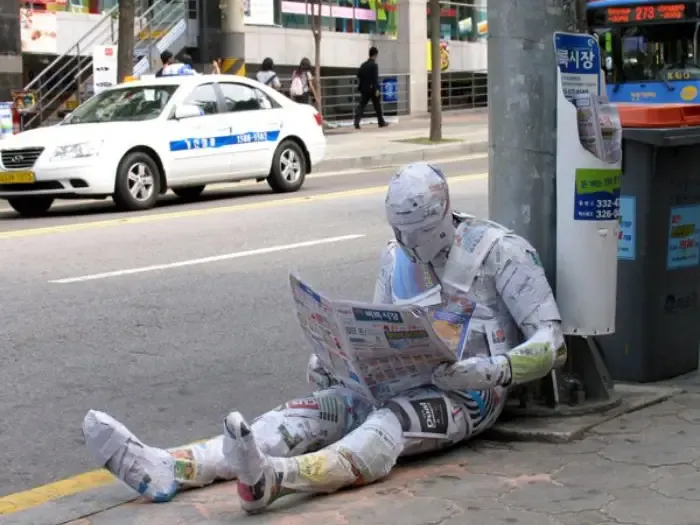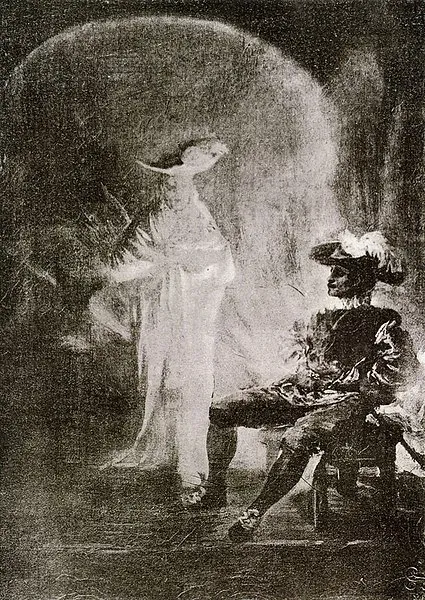The Exorcism
The Exorcism by Goya is another painting by the Spanish master, part of the six works dedicated to witchcraft, which we began discussing with The Witches’ Sabbath.
 Description of the Painting
Description of the Painting
In **Goya‘s Exorcism**, we see the protagonist in the open countryside at night, kneeling in prayer. His expression reveals fear, as he is forced to endure the rite. More than an exorcism, it seems a black magic ritual is being performed, evidenced by the presence of voodoo dolls and dead children. The attention is drawn to the figure of an old woman dressed in yellow; this color might suggest that she is the only real figure besides the protagonist, and thus the only real threat in the painting. In the upper part of the painting, Goya deliberately left unfinished a spectral figure that could be identified as the devil or one of his emissaries. Bats and owls, creatures of the night, fly beside him.
The Style of the Painting
Goya was an eclectic artist and difficult to classify. He balanced between Enlightenment Rationalism and Romanticism. The Spanish master started with neoclassical tendencies and then surpassed them with representations of popular daily life, paving the way for Realism.
Color and Lighting
The luministic atmosphere captured by Goya is very evocative: with the dark night at the top of the sky, while a misty light grazes the horizon’s profile, evoking the impression of lost, desolate distances swept by the wind.
Conclusion
**The Exorcism** is a terrifying painting that conveys the fear and helplessness of the protagonist forced to undergo a strange exorcism ritual in the middle of the night. Rather than a salvific rite, it seems a sacrificial one is being performed. The figures in black evoke a sense of terror, and the way the figure in yellow leans towards the protagonist gives the impression that she intends to imprison him.

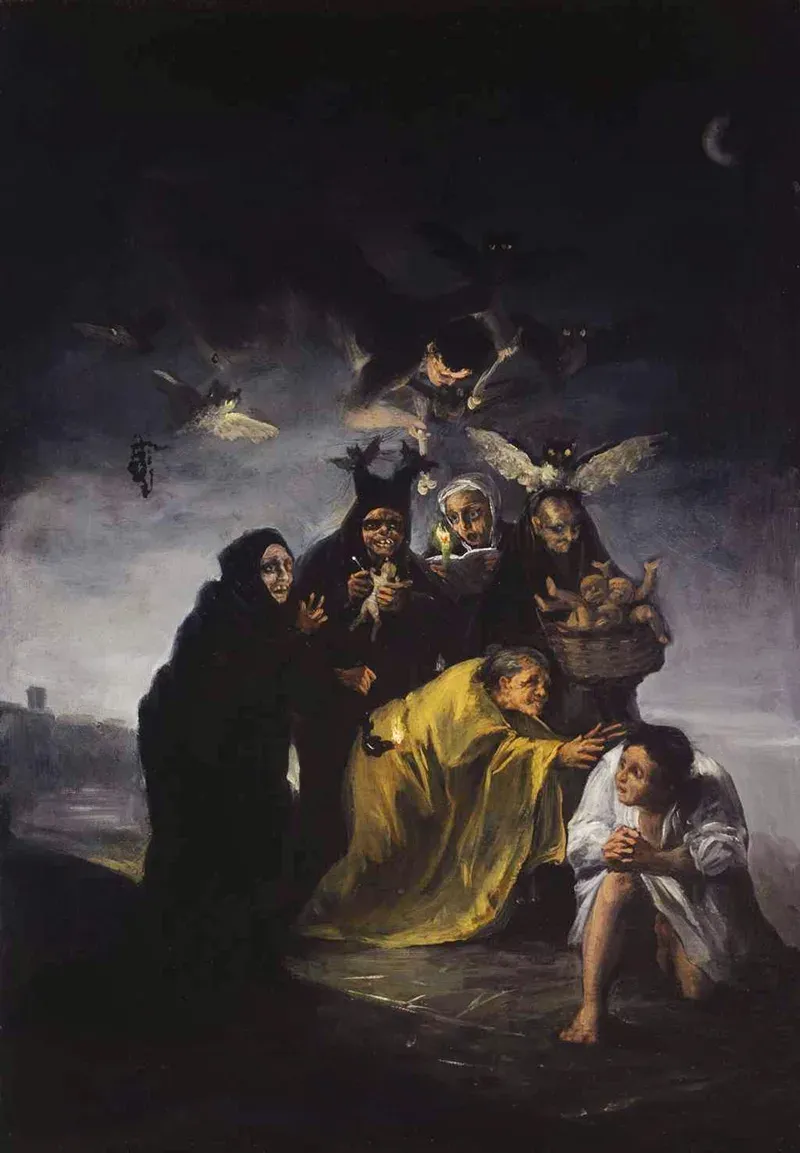
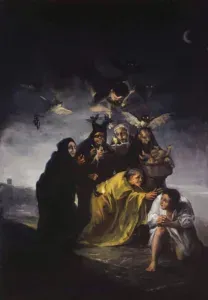 Description of the Painting
Description of the Painting